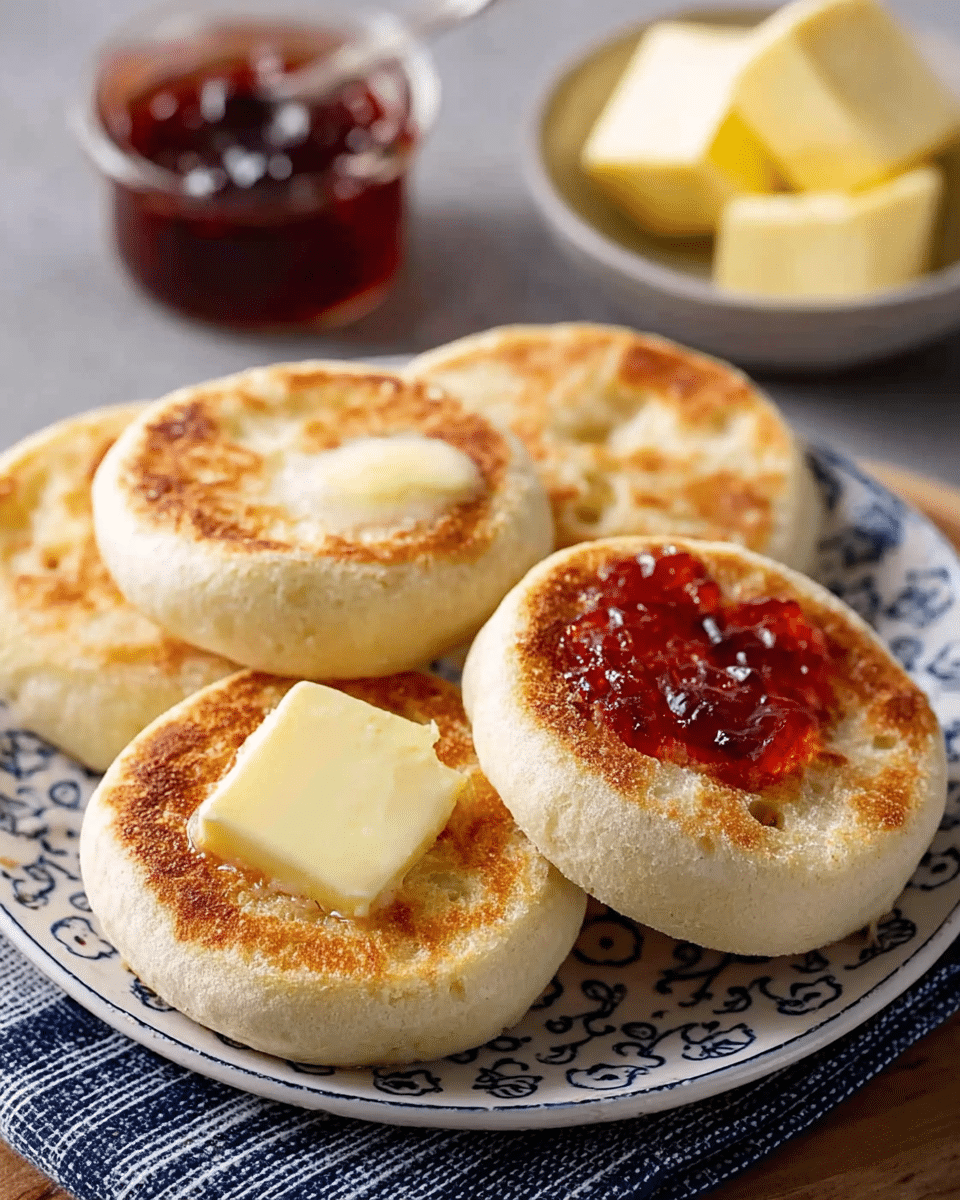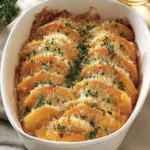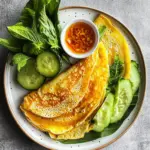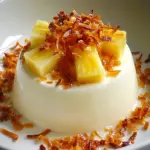Why Make Homemade English Muffins?
Making your own English muffins allows you to control the ingredients, ensuring that they are as fresh as possible. One of the key benefits of homemade muffins is the ability to customize the recipe to suit your dietary preferences. For example, if you follow a gluten-free diet, this recipe can be easily adjusted by swapping out the flour, allowing you to enjoy the same delightful taste and texture as the traditional version. Additionally, homemade English muffins have a unique flavor that’s hard to replicate in pre-packaged varieties. With just a few simple ingredients, you can create a product that tastes fresher and has a more satisfying texture.
Another advantage of making your own muffins is that they are free from preservatives and artificial additives often found in store-bought options. If you’re looking for a wholesome, homemade alternative to mass-produced baked goods, making your own English muffins is a great way to ensure the quality and freshness of your food.
The Key Ingredients for Perfect English Muffins
The ingredients for homemade English muffins are simple and basic, but they come together to create a wonderfully flavorful and fluffy result. Milk, vinegar, and molasses provide the base for the dough, helping to create a soft and light texture. Molasses not only adds a subtle sweetness but also gives the muffins a slight depth of flavor.
The yeast in the recipe is essential for creating the light and airy texture that defines English muffins. Using active dry yeast or instant yeast helps the dough rise, giving the muffins their signature fluffiness. The combination of flour, baking soda, salt, and sugar rounds out the recipe, contributing to the balance of flavor and the perfect crumb. For those following a vegan or dairy-free diet, the recipe can be easily adapted by using non-dairy milk and aquafaba (chickpea water) instead of eggs, without compromising the texture or flavor of the muffins.
The Role of Yeast in Creating Fluffiness
One of the key elements in achieving the light and airy texture of English muffins is the use of yeast. Yeast is a living organism that ferments sugars in the dough, producing carbon dioxide gas. This gas causes the dough to rise, creating the signature nooks and crannies that make English muffins so unique. It’s this fermentation process that gives English muffins their soft, fluffy interior, while also contributing to their distinct taste.
When using active dry yeast, it’s important to proof the yeast by letting it sit in the warm milk mixture for a few minutes to activate it. If using instant yeast, you can skip the proofing step as it activates more quickly and directly mixes with the dry ingredients. Both types of yeast will help achieve the desired fluffy texture, though active dry yeast requires a bit more patience during the rising process.
The Process: Creating the Perfect Muffin Dough
The process of making English muffin dough is simple but requires some attention to detail. First, the milk and other wet ingredients are gently heated to help the butter melt, and to combine the molasses and vinegar for added flavor and tenderness. The warmth of the liquid ingredients helps activate the yeast, which is essential for the dough to rise properly.
Once the wet ingredients are mixed, they are combined with the dry ingredients in a large bowl. The dough is kneaded until it becomes smooth and elastic, which is crucial for developing the right texture. Kneading the dough by hand or with a stand mixer ensures that the gluten develops properly, contributing to the final texture of the muffins.
Once the dough is ready, it’s rolled out to a ½-inch thickness and cut into circles. This step gives the muffins their characteristic round shape. The dough circles are then allowed to rise for about 20 minutes, giving them time to expand before cooking. This step is crucial, as it ensures that the muffins are light and airy once baked.
Cooking the Muffins: The Importance of the Pan
The method of cooking English muffins is unique, as they are traditionally cooked on a griddle or heavy pan rather than baked in an oven. This creates a slightly crisp exterior while keeping the inside soft and fluffy. The dough circles are placed in a preheated, medium-high heat pan, where they are cooked for a few minutes on each side until browned and cooked through.
The pan’s heat needs to be carefully controlled to ensure the muffins cook through without burning on the outside. It’s best to cook them on medium to medium-high heat, turning them occasionally to avoid uneven browning. This pan-cooking method is what gives homemade English muffins their distinct golden-brown crust, which is slightly crisp, but not overly crunchy.
Once the muffins are cooked on the pan, they are transferred to the oven to dry them out further and give them a slightly firmer texture. Baking them at a low temperature allows the muffins to cook evenly through without losing their softness. This final step helps set the texture and ensures that the muffins are perfect for splitting open and filling with your favorite spreads or toppings.
The Versatility of Homemade English Muffins
Homemade English muffins are incredibly versatile and can be enjoyed in a variety of ways. The most traditional way to enjoy them is by splitting them in half and toasting them, then adding butter and jam. The crispy exterior and soft interior make them ideal for toasting, as they absorb just the right amount of heat to achieve the perfect texture.
In addition to butter and jam, these muffins can also be used for savory breakfast sandwiches. Add eggs, cheese, and bacon for a classic breakfast, or experiment with other fillings like avocado, spinach, and tomato for a healthier twist. The mild flavor of the muffins pairs well with both sweet and savory ingredients, making them a great option for breakfast, brunch, or even a light dinner.
For those who like a little extra indulgence, you can drizzle these muffins with melted chocolate or top them with honey or maple syrup. The options are endless, and homemade English muffins provide a canvas for endless creativity.
The Healthier Side of Homemade English Muffins
While these muffins are a delightful treat, they can also be a relatively healthy option compared to store-bought versions. The use of whole ingredients like molasses and butter adds richness without relying on excessive sugar or artificial sweeteners. Additionally, by making them at home, you can control the amount of sugar and fat used, allowing for a more balanced version that suits your dietary preferences.
For those seeking a gluten-free alternative, the recipe can be easily modified by substituting regular flour with gluten-free flour. This ensures that everyone, regardless of dietary restrictions, can enjoy a delicious homemade muffin. Using non-dairy milk and plant-based egg substitutes, such as aquafaba, further expands the recipe to accommodate a vegan diet without compromising on taste or texture.
Conclusion: Why You Should Try These Homemade English Muffins
In conclusion, homemade English muffins offer a delicious and satisfying alternative to their store-bought counterparts. With their crispy exterior, soft and fluffy interior, and customizable nature, these muffins are perfect for breakfast, brunch, or any time you want a tasty, homemade treat. The process of making them is straightforward, and the results are incredibly rewarding. Whether you enjoy them with butter and jam, as part of a savory sandwich, or topped with melted chocolate, these homemade muffins are sure to become a beloved addition to your baking repertoire.
Making your own English muffins also allows you to control the ingredients, ensuring that they are fresh and tailored to your preferences. The process is simple enough for bakers of all levels, and the results speak for themselves. With a golden-brown crust and a soft, airy interior, these muffins bring the perfect balance of texture and flavor, making them an irresistible treat for any occasion.






